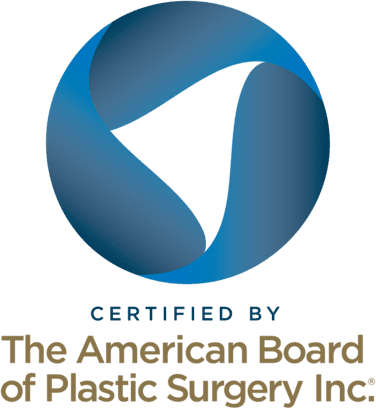Make the Most of Your Breast Augmentation Consultation
Medically reviewed by Jennifer Richman on March 25, 2024.
Requesting a consultation with a board-certified surgeon is the first step in any surgical journey. We know that for many, a breast augmentation consultation can be both exciting and daunting.
For cisgender women looking to augment their breasts or trans and non-binary patients interested in surgical gender affirmation, breast implants, and on rare occasions, fat grafting may be used to help you achieve your goals. In the field of gender-affirming care, this procedure was formerly known as MTF top surgery and MTF breast implants.
In this article, we provide practical tips to make the most out of your breast augmentation surgical consultation. We also go over common key anatomical differences between cisgender and transgender patients that your provider should be aware of.
You can request a free, virtual, or in-person consultation with one of our board-certified surgeons for breast augmentation surgery today. Please note that at the Gender Confirmation Center (GCC), we only offer gender-affirming top surgery to trans, non-binary, and gender-variant patients. We do not offer cosmetic surgery for cisgender patients.
What to Expect During Your Surgical Consultation
There is no such thing as a stupid question in a consultation: it is your time to get all of your doubts resolved and to get to know your surgeon. If you need a follow-up conversation, you can always communicate with your care team or request a second consultation with the same or a different provider. During your consultation, your board-certified surgeon will review the following three points:
- Medical history, current medications, and supplements: Medical conditions should be optimized and certain medications and supplements may need to be temporarily suspended before and after surgery.
-
- Examine your current breasts: Your surgeon will examine the volume, shape, skin elasticity, and other qualities of your chest. Understanding your current anatomy will help us ensure that we can set realistic expectations for your surgery.
- Discuss your goals and how surgery can realistically help you meet them: Our surgeons will ask you about your personal goals for surgery, discuss techniques that can be used, and offer options for different realistic surgical outcomes (e.g., a recommended range of implant sizes for your anatomy).
Preparing for Your Consultation: Frequently Asked Questions About Breast Augmentation
What options exist for breast augmentation surgery?
Patients can choose between undergoing breast augmentation surgery through a fat grafting procedure, the insertion of breast implants, or a combined approach. Patients who are interested in implants can choose between silicone and saline fillings, different implant sizes, implant placement locations (above or below the muscle), different incision locations, and other factors.
Which technique is better: implants or fat grafting?
No technique is necessarily superior to the other. Patients choose techniques that are more aligned with their unique goals and needs. Consider the following factors when making your decision:
- Silicone and saline breast implants:
- Results are visible almost immediately, although implants placed under the muscle can take three to six months to drop and settle into their final position.
- We can be certain of the precise volume that their breasts will increase by
- They are ideal for patients who want a significant to moderate increase in volume and have very tight skin
- Fat grafting:
- Less frequently utilized
- Results are unpredictable because we are not sure how much injected fat will be reabsorbed into the body during the first six months of healing
- Weight fluctuations post-op can impact results
- Harder to obtain larger breast volumes and an ideal shape without using implants
How do I know if my surgeon is qualified to perform a breast augmentation on me?
Your surgeon should be board-certified, have hospital privileges, and have the proper training and experience with the specific breast augmentation surgical technique you wish to undergo. We recommend that trans and non-binary patients ask if their provider has worked extensively with transfeminine patients to know what techniques lead to long-term satisfaction given key anatomical differences.
How do I know if a surgeon is a good fit for me?
Regardless of how you feel about your surgeon’s personality or bedside manner, we believe that it is important for you to feel listened to by your surgeon. Ask yourself: are the surgeon’s recommendations in line with what you want? If you do not feel comfortable with a specific surgeon, you can always request a free consultation with another provider.
How much does a breast augmentation consultation cost?
In the US, a surgical consultation often costs between $100 and-250, although this number differs by provider. At the GCC, all surgical consultations are free of cost, regardless of whether you have insurance.
What is the difference between transgender and cisgender breast augmentation?
Generally speaking, patients who go through a full, testosterone-dominant first puberty often have a wider chest. Likewise, the nipple position tends to be further out in the chest, rather than in the center of each pectoral muscle or breast. That said, patients with higher BMIs or subcutaneous fat deposits in the chest tend to have nipples that are more centered.
As a result of these differences, surgeons will often order wider implants for the proportionally larger chest dimensions or perform a fat grafting revision surgery to accentuate side or medial cleavage. There may be other considerations your surgeon will need to take into account, given your anatomy that can be addressed in a free consultation.
What implant size should I get?
After assessing your anatomy, your surgeon may offer you a range of implant volume (measured in CC) or an exact amount that they think would go best with your frame. At the GCC, we offer patients implant size ranges because it gives patients more options to choose what size is best for them and, as a result, tends to lead to more patient satisfaction.
At the GCC, we have our patients do the rice test at home, making DIY implant sizers, to get a sense of what implant size they would like most.
What is recovery like after breast implant surgery?
Breast augmentation recovery takes about six weeks, though most can return to work after one to two weeks. During the first week, patients will need to take sponge baths to avoid wetting the surgical site, will need help with household chores, and can expect to experience pain and swelling. For more recovery information, click here.
Request a Free Surgical Consultation Today.
All virtual and in-person consultations with our board-certified surgeons are free. Once you fill out this form, our patient care team will reach out and guide you through every step to get to surgery.




